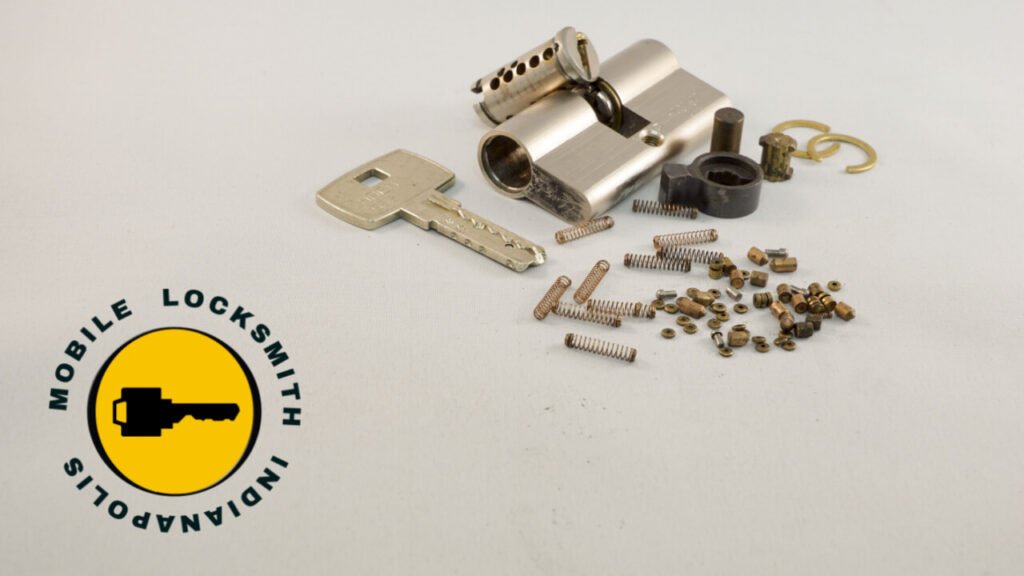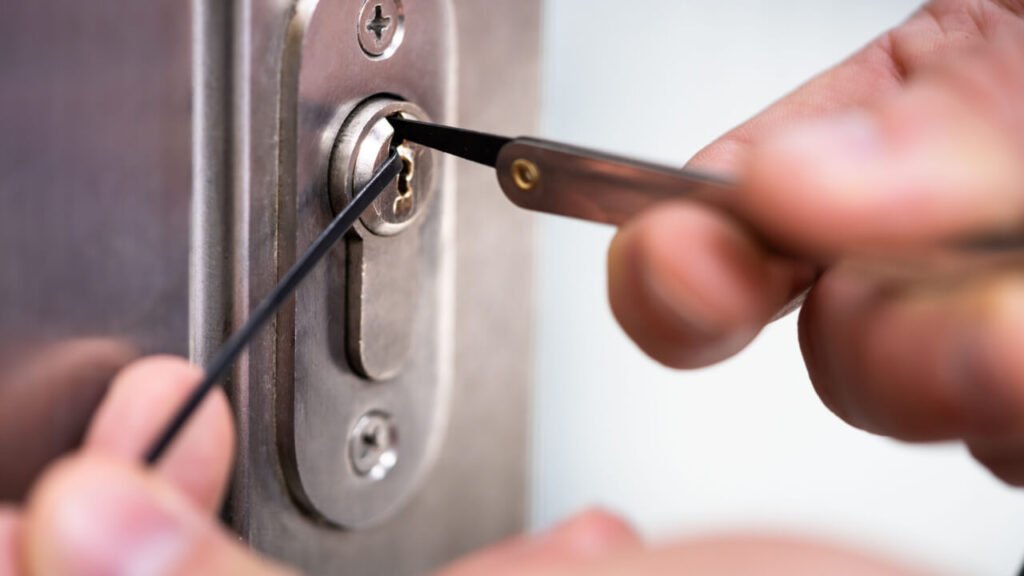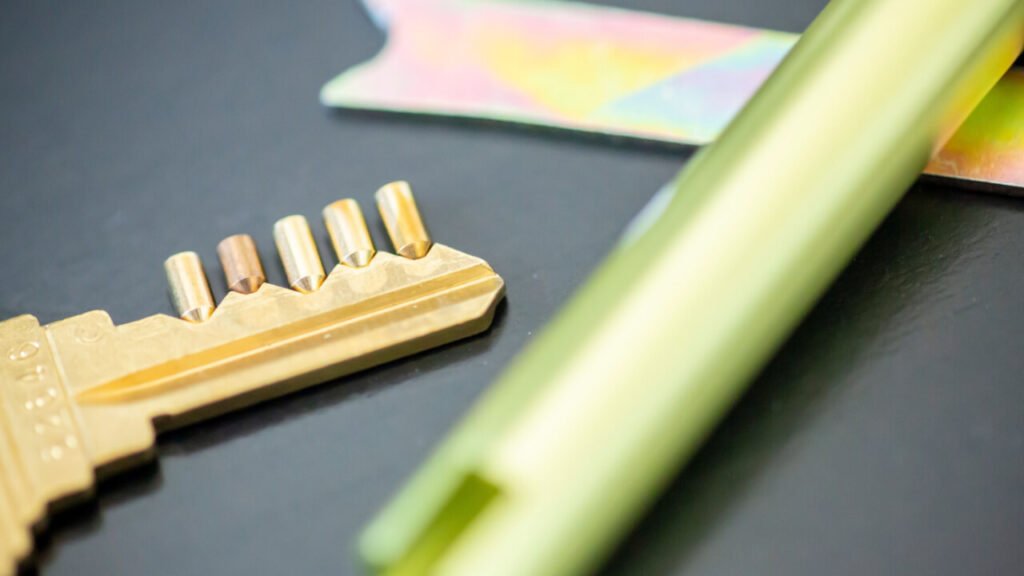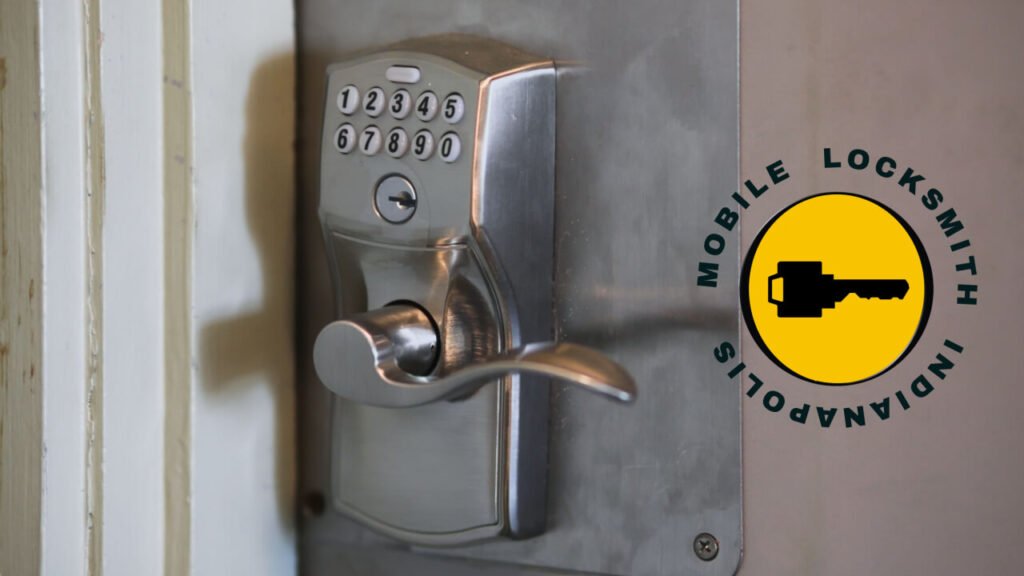Lock Picking
Locksmithing is an ancient craft, combining elements of art, science, and engineering to secure our homes, businesses, and valuables. In the heart of the Indianapolis metro area, locksmiths are not just service providers but custodians of security, employing both time-honored techniques and cutting-edge technologies. At the core of their expertise is an intricate knowledge of lock picking, a skill that, when examined closely, reveals the fascinating interplay of physics and mechanics. This article delves into the scientific principles underpinning the function and picking of locks, shedding light on the complexities of this craft in the context of Indianapolis’s diverse urban and suburban landscape.
Understanding Lock Mechanisms

The most common type of lock in Indianapolis, as in much of the world, is the pin tumbler lock. Invented in ancient Egypt and refined over centuries, this lock consists of a series of spring-loaded pins, each divided into two segments: the key pin, which touches the key when inserted, and the driver pin, which is pushed down by the spring. When the correct key is inserted, it aligns the gaps between the key pins and driver pins with the shear line of the lock cylinder, allowing the cylinder to turn and the lock to open.
Physics at Play
The operation of a pin tumbler lock is governed by several physical principles. First and foremost is Newton’s first law of motion: an object at rest stays at rest unless acted upon by an external force. In the context of a lock, the key provides the necessary force to align the pins. The design of the key and lock also illustrates the principle of mechanical advantage, allowing a small rotation of the key to exert a greater force on the lock mechanism.

The Art of Lock Picking

Lock picking, the art of unlocking a lock without the original key, is often misunderstood. Far from a mere tool of illicit activities, it is a legitimate skill for locksmiths, especially in emergency lockout situations. Lock picking requires a deep understanding of the mechanical design of locks. Using tools like tension wrenches and pick rakes, a locksmith manipulates the pins to align at the shear line, mimicking the action of the correct key.
Scientific Tools and Techniques
Locksmiths in Indianapolis employ a variety of scientific tools and techniques to refine their craft. For example, stroboscopic flash photography can capture the movement of pins within a lock, providing insights into the dynamics of lock picking. Similarly, locksmiths may use materials science to understand the wear and tear on locks and keys, leading to more durable designs.

Advances in Lock Technology

The Indianapolis metro area, with its blend of historic buildings and modern infrastructure, is witnessing the adoption of advanced locking mechanisms, including electronic and biometric locks. These technologies introduce new principles, such as electrical circuits and algorithms, into the domain of locksmithing. However, the fundamental goal remains the same: to secure properties by controlling access.
Ethical Considerations and Legal Framework
It’s crucial to note that lock picking should only be performed by professionals within the bounds of legality and ethics. Indiana law requires locksmiths to be registered, ensuring they adhere to professional standards and ethical practices. This regulatory framework protects both the locksmith industry and the public, maintaining trust in the security provided by these experts.

Conclusion
The science of lock picking is a fascinating intersection of physics, engineering, and craftsmanship. For residents and businesses in Indianapolis, understanding the scientific principles behind locks and locksmithing can foster a greater appreciation for this essential service. As technology evolves, so too will the craft of locksmithing, continuing to secure our homes and communities against the backdrop of the ever-changing urban landscape of Indianapolis.
Sources
- The Complete Book of Locks and Locksmithing – This book provides a comprehensive overview of the history and techniques of locksmithing, including the physics of locks.
- Mechanical Engineering Journal – Various articles in this journal discuss the mechanics of lock mechanisms and the materials used in lock and key manufacturing.
- Indiana Professional Licensing – The state’s guidelines and regulations for locksmiths offer insight into the legal and ethical standards in the industry.
